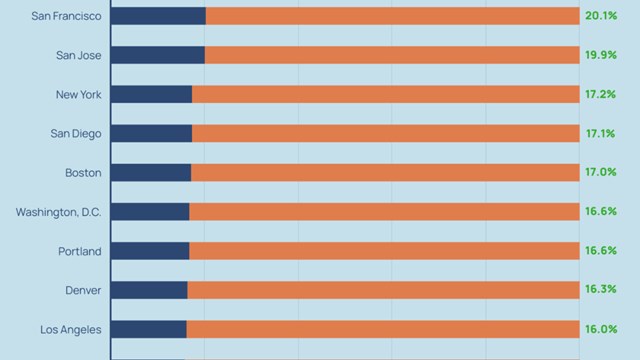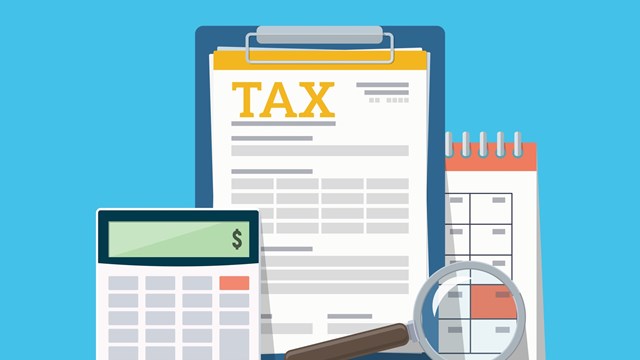It may sound like an oxymoron, but in the world of co-ops there is such a thing as “bad income.” The federal tax code requires that cooperative buildings receive at least 80 percent of their income from their shareholders—usually in the form of monthly maintenance charges and periodic special assessments. Failure to meet this requirement (commonly known as the 80/20 rule) results in a building’s shareholders being unable to declare certain tax benefits, such as declaring the interest on mortgages and an exemption on taxable income when selling a home.
“The 80/20 rule is a tax concept that a cooperative must meet in order to qualify as a cooperative,” says Ed Taub of the Manhattan-based accounting firm ERE LLP.
Problems can arise when buildings rent out their valuable first-floor retail space to make money from adjacent parking garages, or lease exterior space to large-scale advertisers. While these strategies can be great moneymakers, they can be problematic within the confines of 80/20 regulations. To avoid losing valuable tax abatements—the penalty for breaking the 80/20 rule—co-ops either have to come up with ways to increase their good income, or offer the space at less than market value.
What’s 80/20?
The 80/20 provision is contained in Section 216 of the Internal Revenue Code. In essence, its purpose is to make sure that a residential co-op is indeed a residence and not a business.
“The original concept was that if more than 20 percent of the income came from other sources, then not enough is coming from residents—and therefore they shouldn’t get a special tax treatment of taking their deductions a second time,” says Stephen Beer of the Manhattan-based accounting firm Czarnowski & Beer.
“They didn’t want [people] to buy into an entity [for housing] and then in effect create tax-free income,” says Gerald Marsden of the Manhattan-based accounting firm Eisner & Lubin LLP. Marsden explains that without the 80/20 provision, a residential co-op building could primarily rent out space to retail stores and offices, but because those businesses existed in a co-op, the building wouldn’t have to pay taxes on that rental income. “In effect, the originators of the 80/20 rule didn’t want you to hide a business in a co-op,” Marsden explains.
“It’s the law that allows the owners to take a deduction on their personal tax return for the same deduction that the corporation took on its corporate tax return,” Beer further explains. “So it’s allowing a double deduction.”
Beer adds that if the 80/20 requirement isn’t met, both the building corporation and the shareholders lose the benefit of deducting mortgage interest and real estate or corporate taxes.
“It’s an annual compliance,” says Taub, “and if you’re not compliant, you’ll lose your status as a housing cooperative for that year. The big penalty is that you don’t get to pass through the real estate interest deduction—and that can be a big problem if any shareholders sold their units during that time where the building didn’t qualify. They lose the potential of the $500,000 reduction [you can claim] when selling your principal residence.”
Good Income vs. Bad Income
Simply put, when it comes to 80/20, good income is money collected from a building’s shareholders. Bad income is money collected from other sources.
There are ways buildings can raise the good income they take in, which can help offset the bad income they collect. The most common way is for the building to pay for certain services that individual shareholders would normally pay for themselves. The building then bills the owners for their share.
“It’s a calculation,” says Taub. “You have a numerator and denominator, and you either increase the denominator, or increase the numerator. Buildings raise maintenance, they charge user fees on certain items, they reduce commercial income. They create clauses in leases that allow them to do that if they need to. If they have a supermarket for a commercial tenant, and they get $200,000 from that tenant per year, by reducing the supermarket’s rent to $180,000, they can get over that 80 percent, and they’ll [actually] give the store back the extra money.”
Or, says Marsden, “Let’s assume they have a garage attached to their building. Rather than have the [shareholders] rent from the garage, the co-op could rent a certain amount of spots from the garage and then charge the tenants for use of the parking spots. That increases the building’s good income. They can do the same thing for utilities. They can let the utility bill the co-op, and then the co-op can bill the tenants.” Marsden says this can also be done with cable or Internet service.
And, adds Beer, it can also be done with a building’s insurance premiums. A building can have an insurance representative made available to provide homeowner insurance to all shareholders. The residents then pay the building, which in turn pays the insurance premium. Beer says also says he’s seen buildings do this with maid services, secretarial services and even gym memberships.
“Good 80/20 income says that as long as the money is coming from the tenants/shareholders, it’s good income,” says Taub. “It is kind of silly—it’s the same money, after all—but that’s the tax laws. You have to work within the rules.”
Working With 80/20—is it Fair?
Though the co-op community isn’t a big fan of the 80/20 law for obvious reasons, it does serve a purpose. However, it can make things confusing and often results in buildings not getting full value on commercial space they rent out.
Beer says a building in Manhattan with valuable commercial space could potentially get up to 60 percent of its income from renting out that space, which could then subsidize maintenance costs and reduce the burden on shareholders.
“It’s advantageous for owners and buildings to have as much commercial income because that way, they’ll pay less maintenance,” Beer says. “And that generally [results in] higher-priced apartments. But with the 80/20, you can’t go over this 20 percent.” That results in buildings having to search for ways to create more good income.
There can even be instances where buildings make the decision not to comply with 80/20 and simply give up the tax benefits that come with complying. According to Beer, these may be buildings with lots of non-U.S. residents, since they wouldn’t benefit from the tax breaks either way.
Another factor is the Alternative Minimum Tax (or AMT). Without getting into too many details, the AMT was originally meant to prevent high-income taxpayers from paying too little in taxes.
“It disallows the deduction for New York state income taxes and real estate taxes in its calculations,” Beer said. “So in New York, where we’re paying very high income taxes, a lot of people are pushed into this alternate tax and they end up losing their deductions. So they may end up losing the mortgage interest and real estate reduction anyway.”
Marsden says he’s never seen a situation where a building consciously decided to flout the 80/20 requirement. However, he has seen situations where a building knows the requirement won’t be met, so they let their bad income pile up for that year. Whether your building misses 80/20 by one percent or 50 percent, the penalty is the same—and it’s only for that fiscal year. So if the 20 percent threshold is already blown, it makes sense to maximize bad income and bank it for a rainy day—or a capital improvement project.
“I had a building once that, because of [the] amount of outside income that was coming in, wouldn’t have met the test under any circumstance,” Marsden says. “So the people that year gave up their right to get a deduction for the interest on their real estate taxes. We instructed everybody not to sell in that year because they’d lose the benefits—then the following year, they went back to [complying with 80/20].”
Increased value of real estate in New York City and the nature of 80/20 itself have also resulted in co-op buildings renting their commercial spaces for less money than they would if they didn’t have 80/20 concerns.
“The stores were never a problem before, [but] because of the tremendous increase in the value of rents in the city of New York, a lot of buildings are facing a tremendous problem in being able to meet the 80/20 test and get fair market for rentals,” Marsden says.
Beer adds that businesses can also see rebates in their rents when co-ops need to meet 80/20. Most leases call for annual increases in rent.
“Most of these leases have a provision in them that says we can abate rent and give them back their money so we can qualify,” Beer says. “Some of the leases even say we’re required to do it. So if I were a store owner I’d be looking for a building with an 80/20 problem because I would hope someday I’d get an abatement on my rent.”
Proposed Changes
Over the years, there have been several movements to change 80/20. A story from the April 25, 1982 New York Times reported that bills introduced in the House and Senate would have amended the law to have the percentages changed to 50/50. In 2001, Representative Charles Rangel introduced legislation proposing changes to the provision.
None of the proposed changes ever went into effect. The reason is that 80/20 is in the federal tax code, and since the overwhelming majority of co-ops are in New York, there’s little motivation to change it outside of New York City.
The scope of those affected by 80/20 is narrowed even further when you consider that it only affects co-op owners—not condo owners. Beer says since a condo situation involves owners having a deed to a piece of real estate (as opposed to co-ops where they own shares of a corporation), they’re entitled to whatever tax breaks property owners have, even though condominium buildings can still contain businesses.
So while co-op boards can hope for a change to the 80/20 rule, don’t expect it to happen anytime soon.
Anthony Stoeckert is a freelance writer and a frequent contributor to The Cooperator.







Leave a Comment